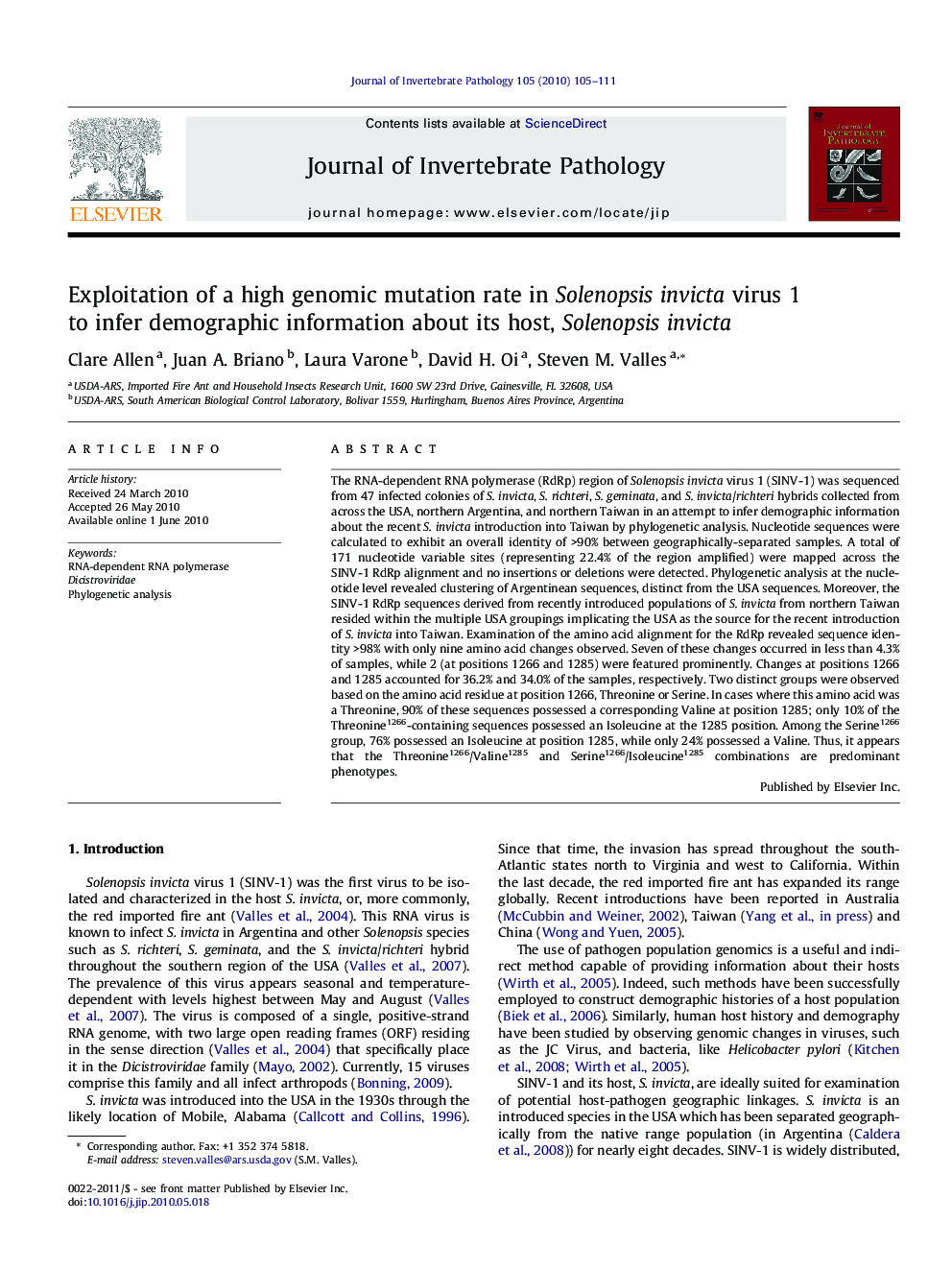| کد مقاله | کد نشریه | سال انتشار | مقاله انگلیسی | نسخه تمام متن |
|---|---|---|---|---|
| 4558277 | 1329931 | 2010 | 7 صفحه PDF | دانلود رایگان |

The RNA-dependent RNA polymerase (RdRp) region of Solenopsis invicta virus 1 (SINV-1) was sequenced from 47 infected colonies of S. invicta, S. richteri, S. geminata, and S. invicta/richteri hybrids collected from across the USA, northern Argentina, and northern Taiwan in an attempt to infer demographic information about the recent S. invicta introduction into Taiwan by phylogenetic analysis. Nucleotide sequences were calculated to exhibit an overall identity of >90% between geographically-separated samples. A total of 171 nucleotide variable sites (representing 22.4% of the region amplified) were mapped across the SINV-1 RdRp alignment and no insertions or deletions were detected. Phylogenetic analysis at the nucleotide level revealed clustering of Argentinean sequences, distinct from the USA sequences. Moreover, the SINV-1 RdRp sequences derived from recently introduced populations of S. invicta from northern Taiwan resided within the multiple USA groupings implicating the USA as the source for the recent introduction of S. invicta into Taiwan. Examination of the amino acid alignment for the RdRp revealed sequence identity >98% with only nine amino acid changes observed. Seven of these changes occurred in less than 4.3% of samples, while 2 (at positions 1266 and 1285) were featured prominently. Changes at positions 1266 and 1285 accounted for 36.2% and 34.0% of the samples, respectively. Two distinct groups were observed based on the amino acid residue at position 1266, Threonine or Serine. In cases where this amino acid was a Threonine, 90% of these sequences possessed a corresponding Valine at position 1285; only 10% of the Threonine1266-containing sequences possessed an Isoleucine at the 1285 position. Among the Serine1266 group, 76% possessed an Isoleucine at position 1285, while only 24% possessed a Valine. Thus, it appears that the Threonine1266/Valine1285 and Serine1266/Isoleucine1285 combinations are predominant phenotypes.
Journal: Journal of Invertebrate Pathology - Volume 105, Issue 1, September 2010, Pages 105–111